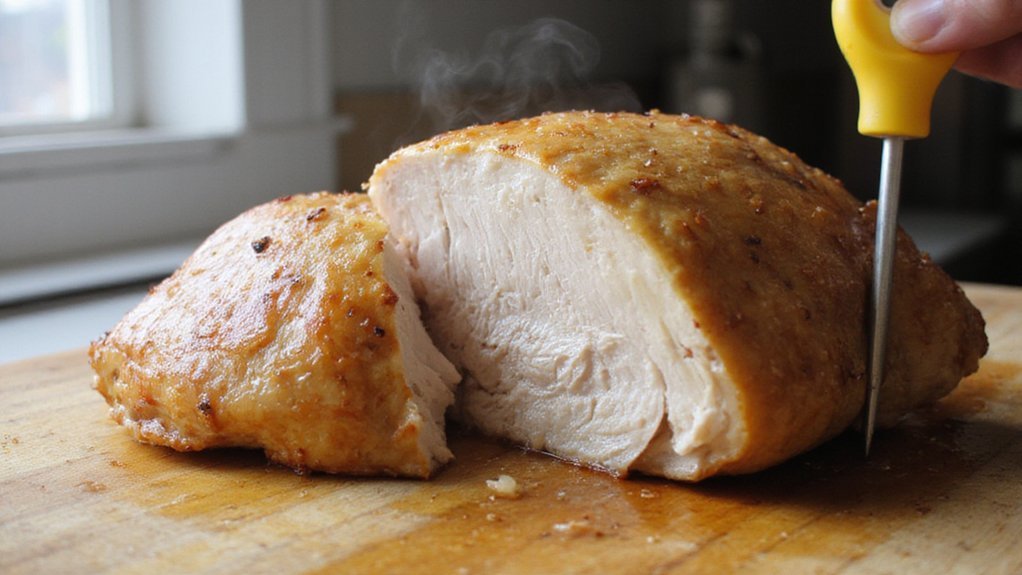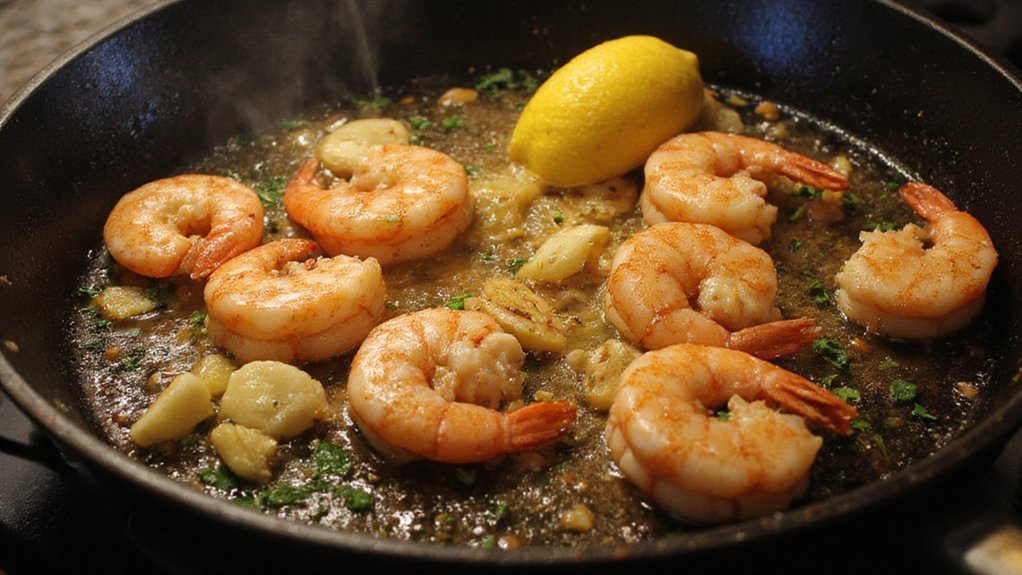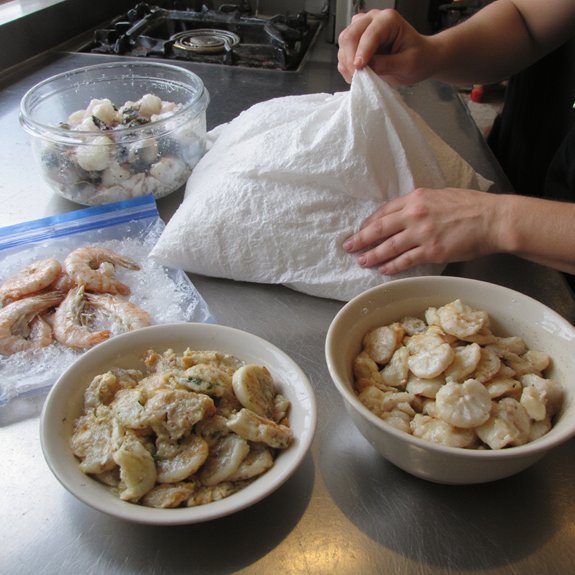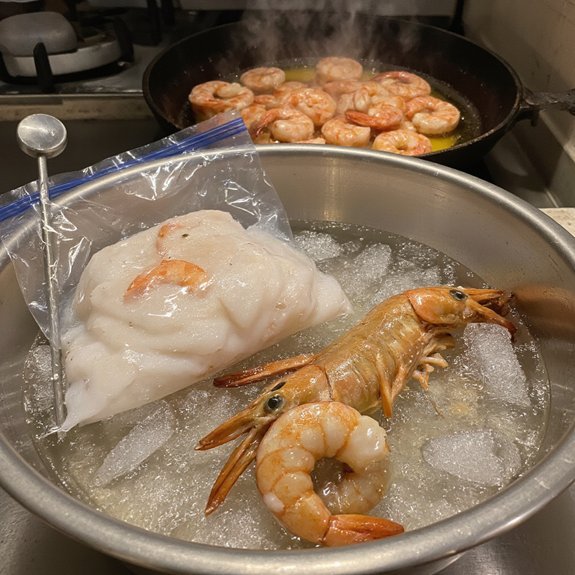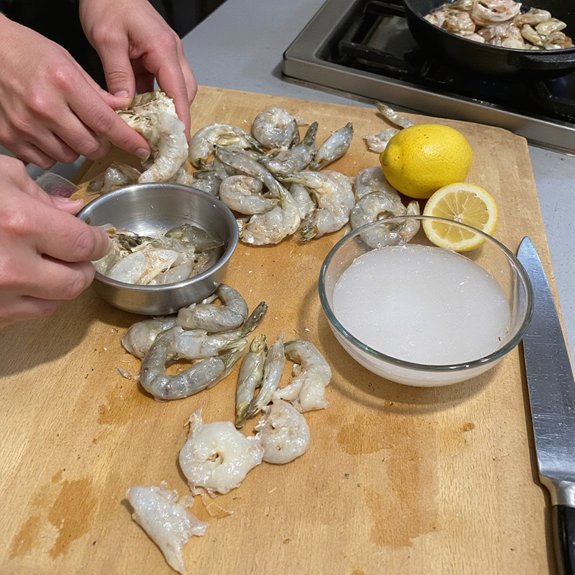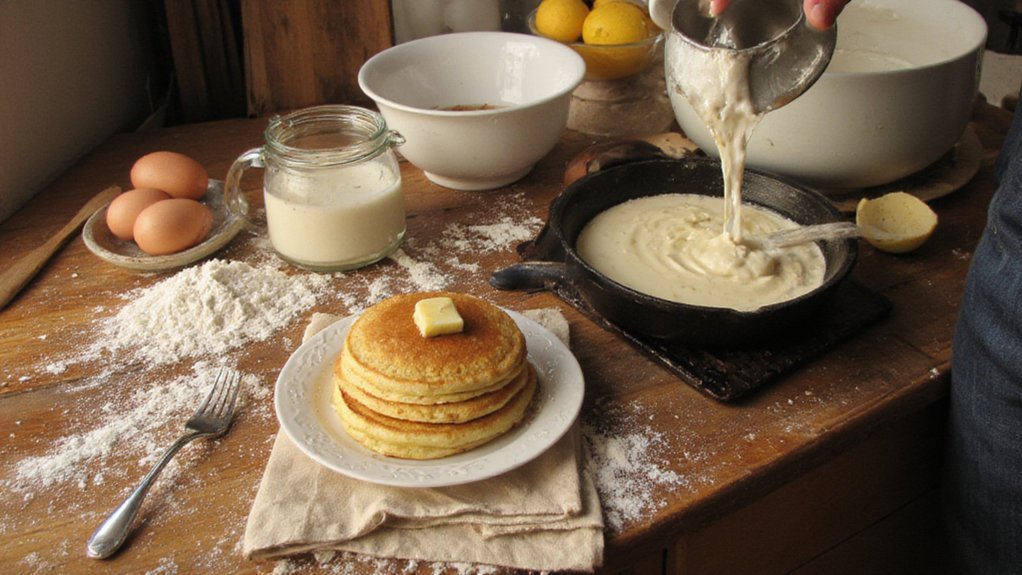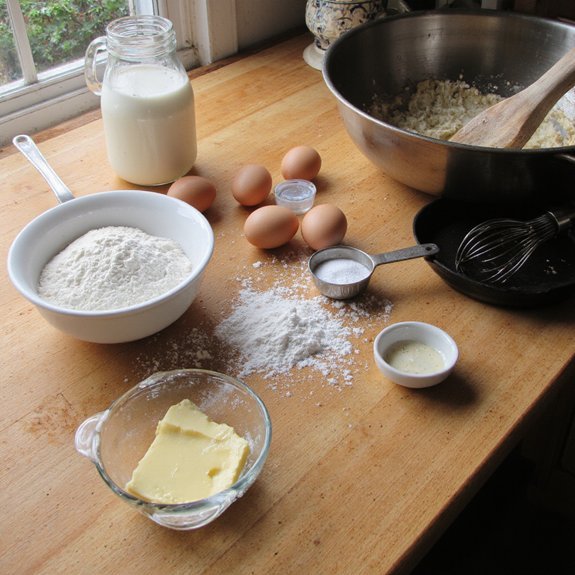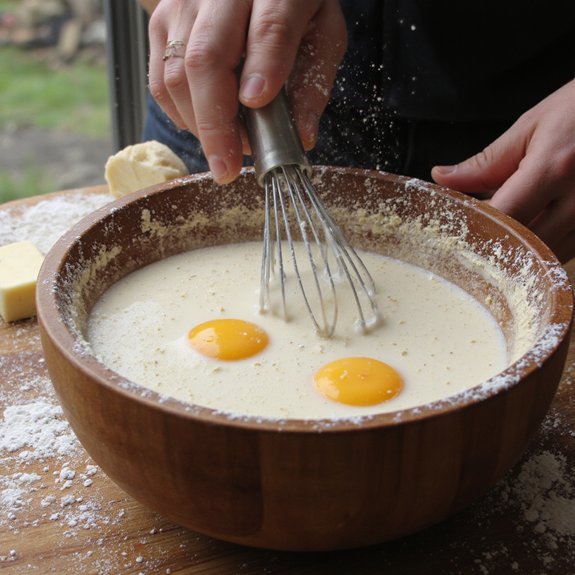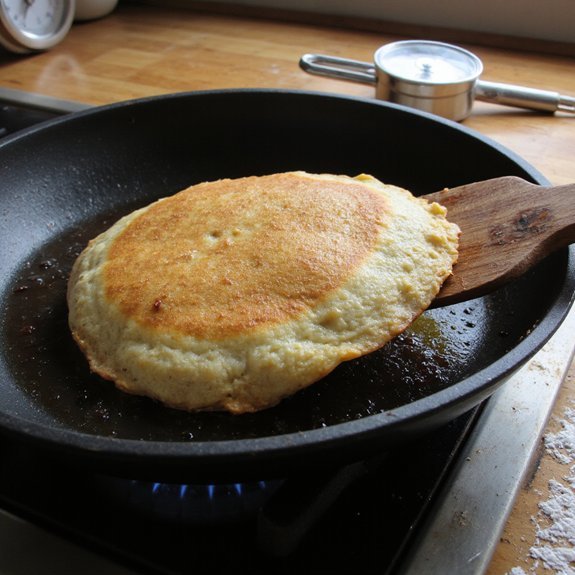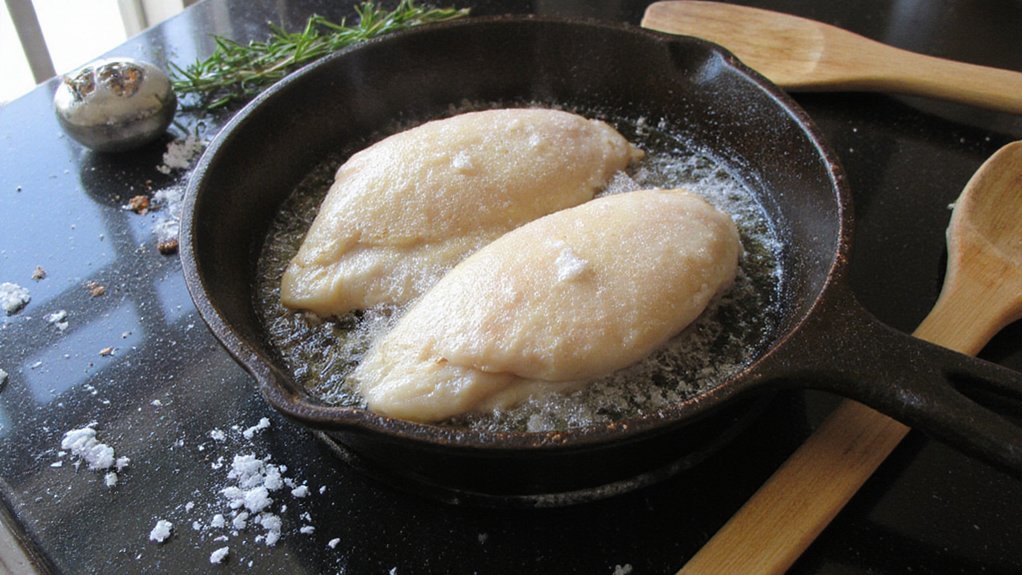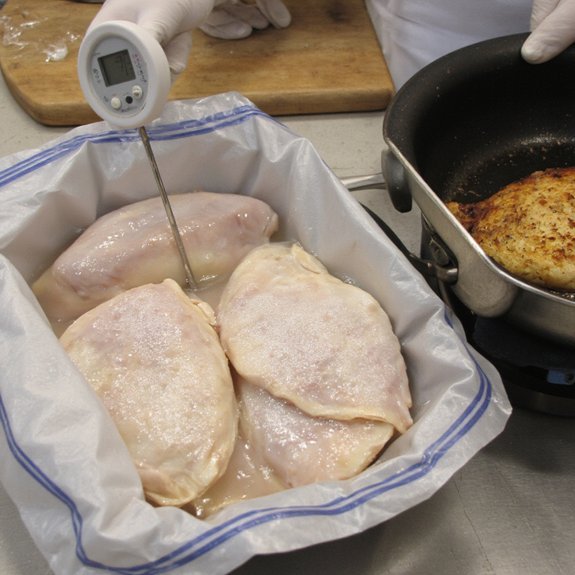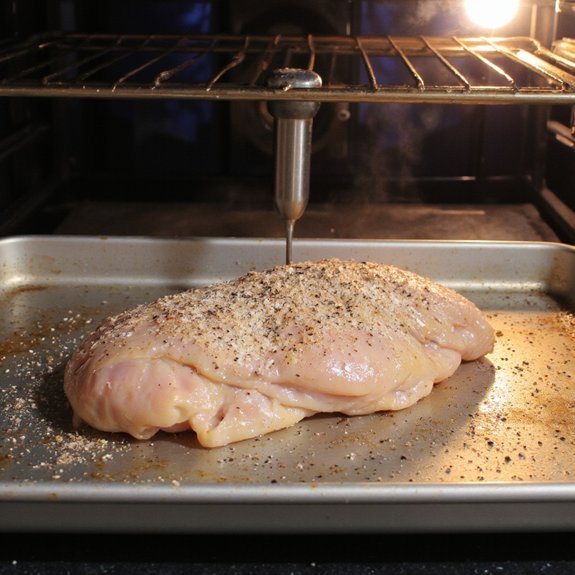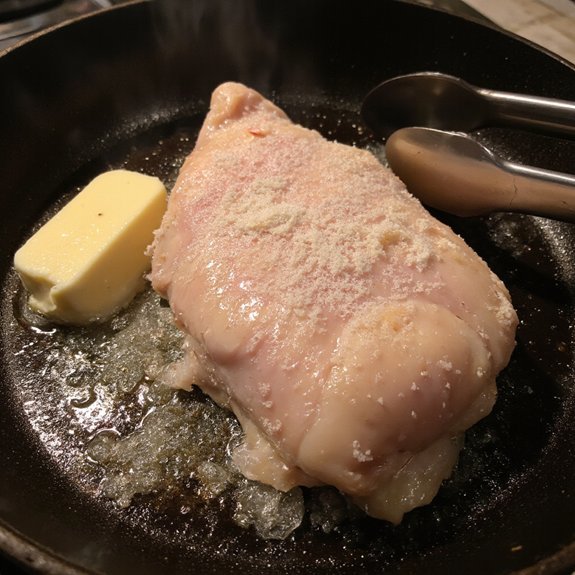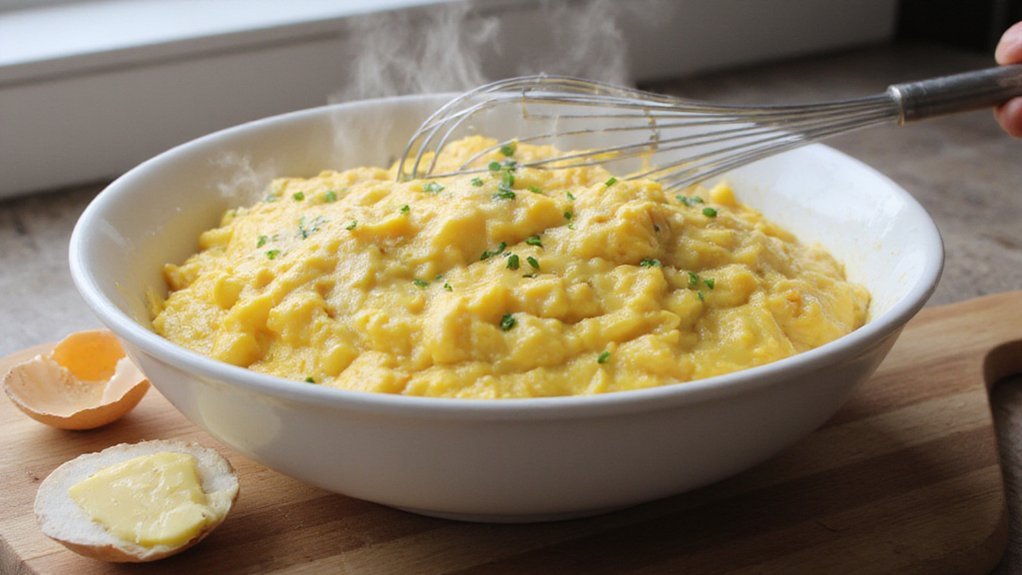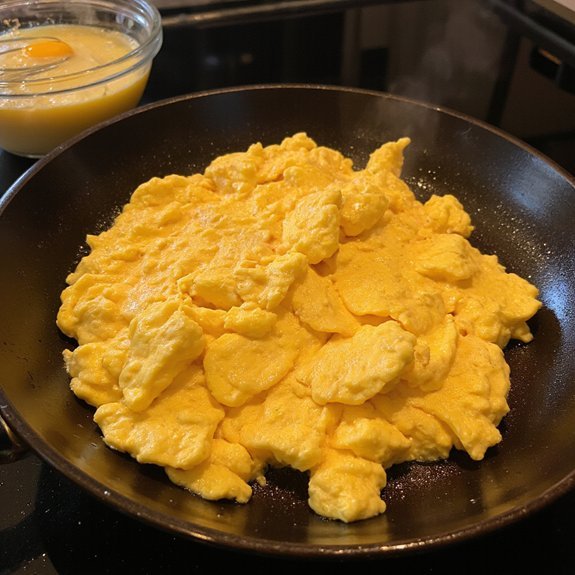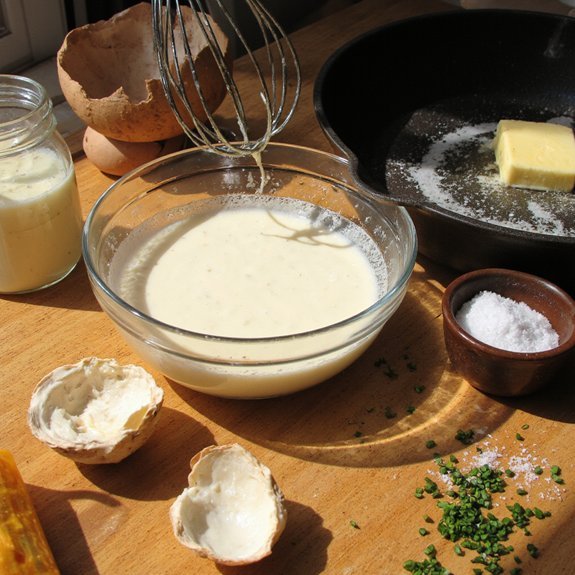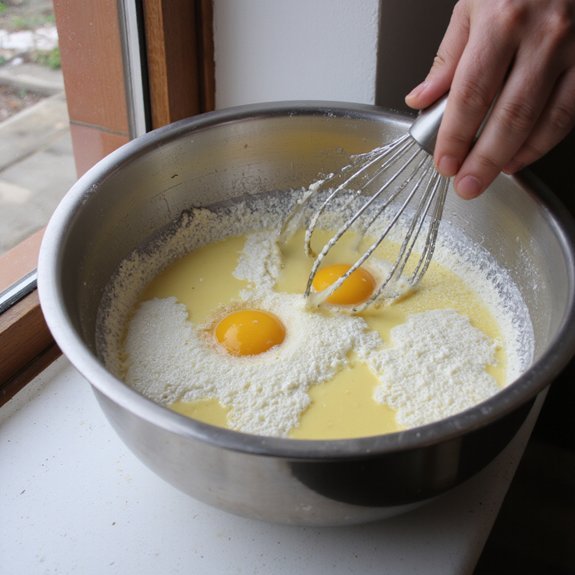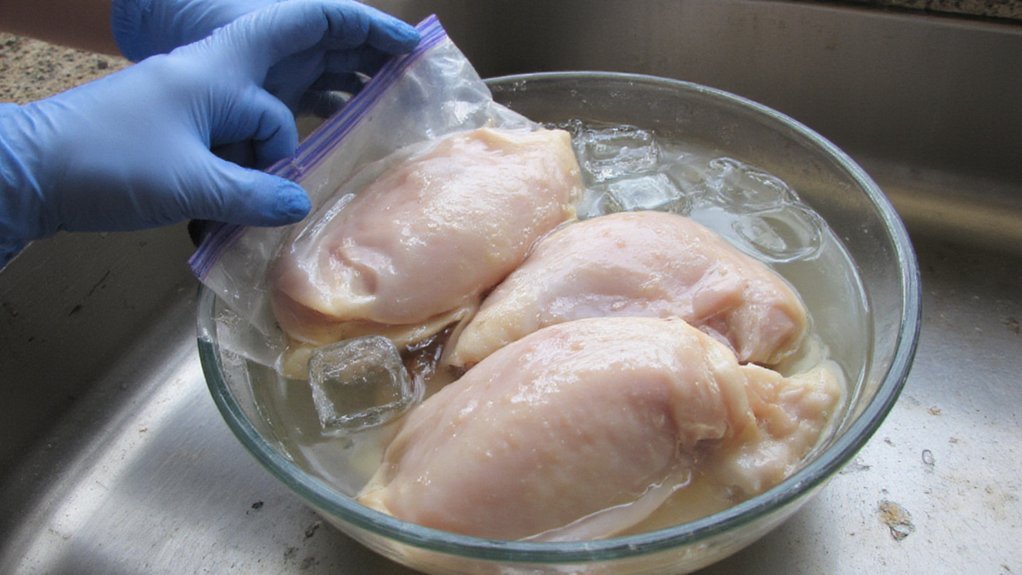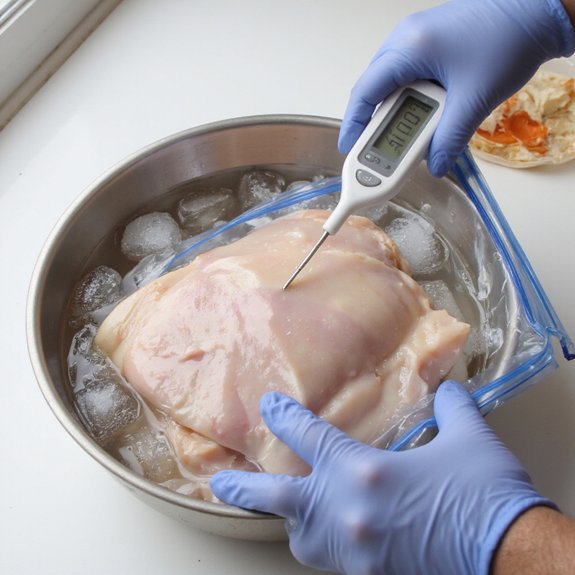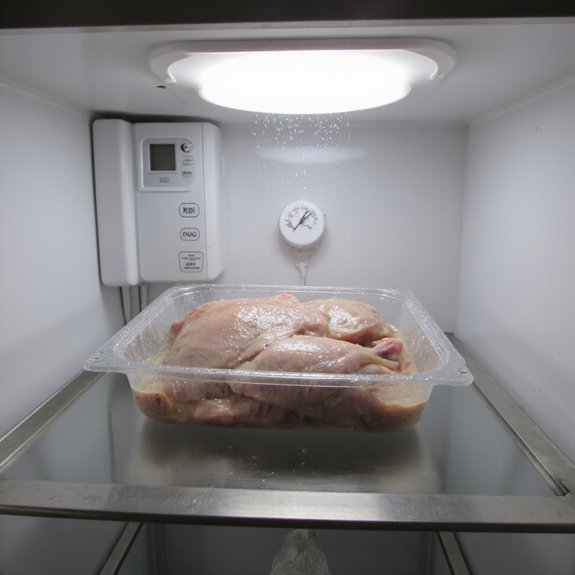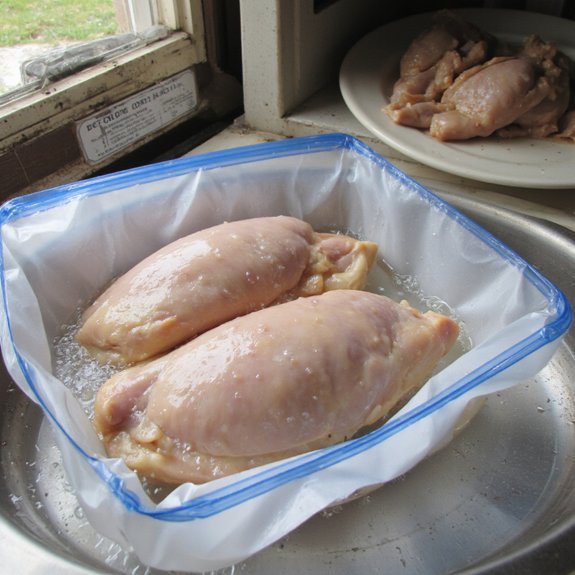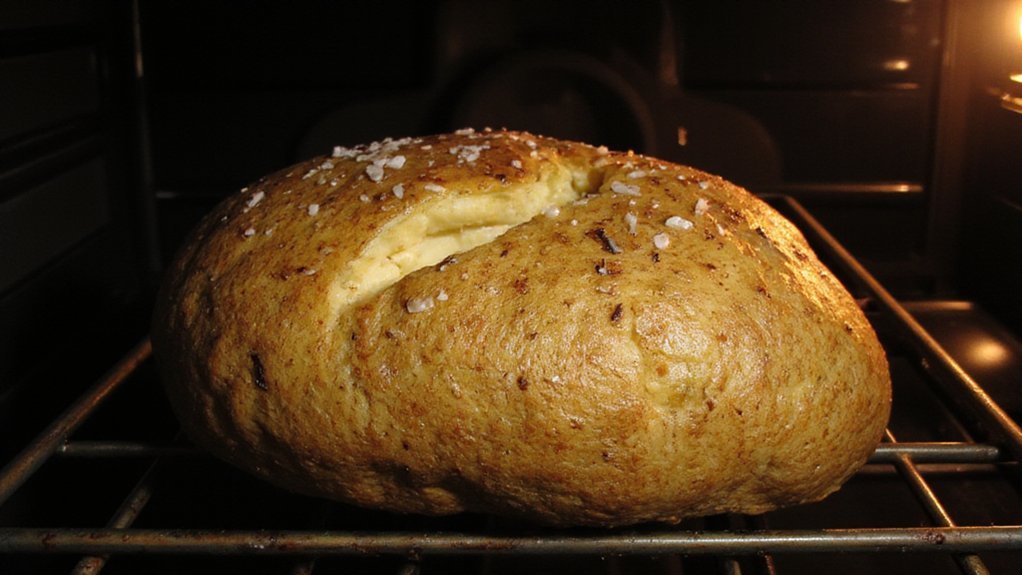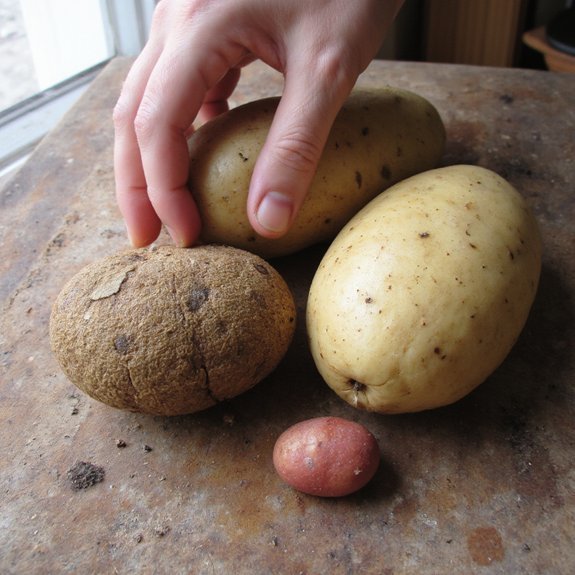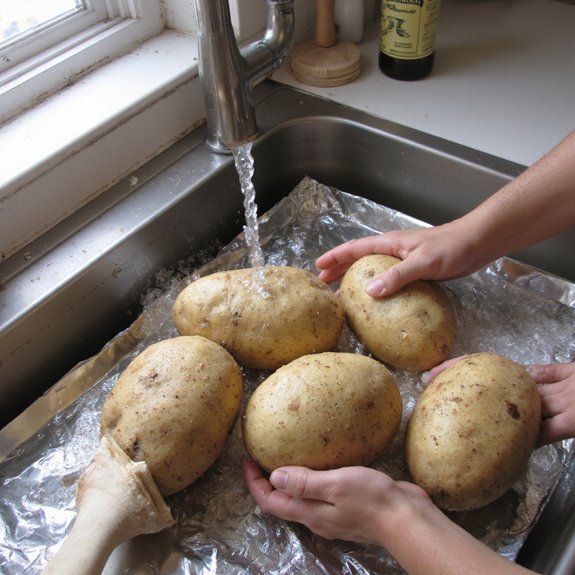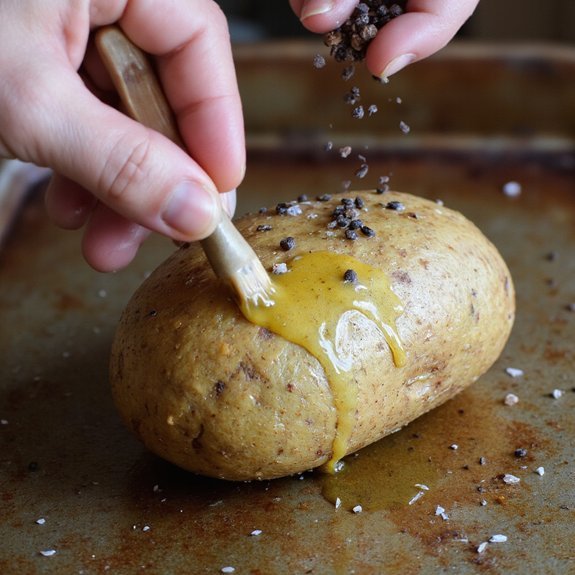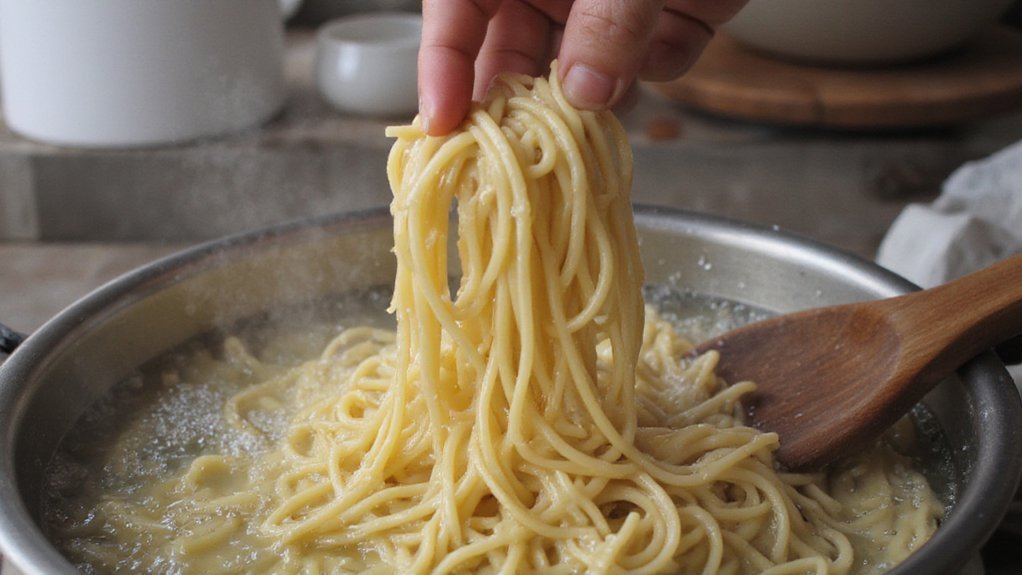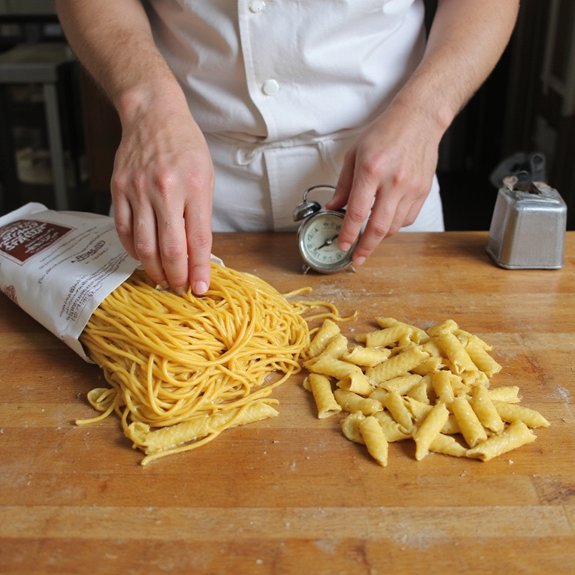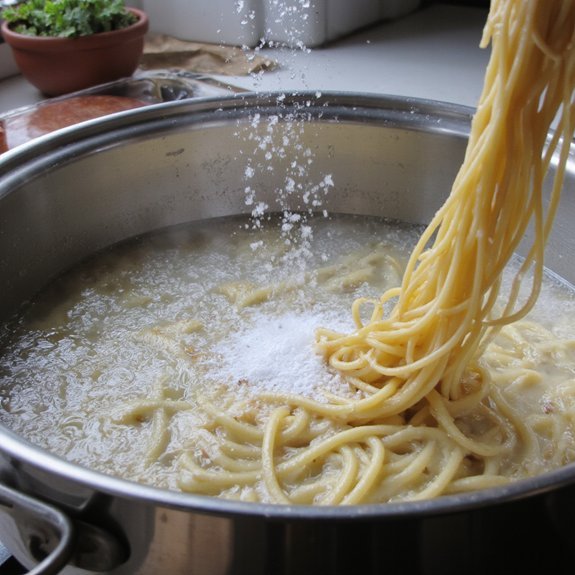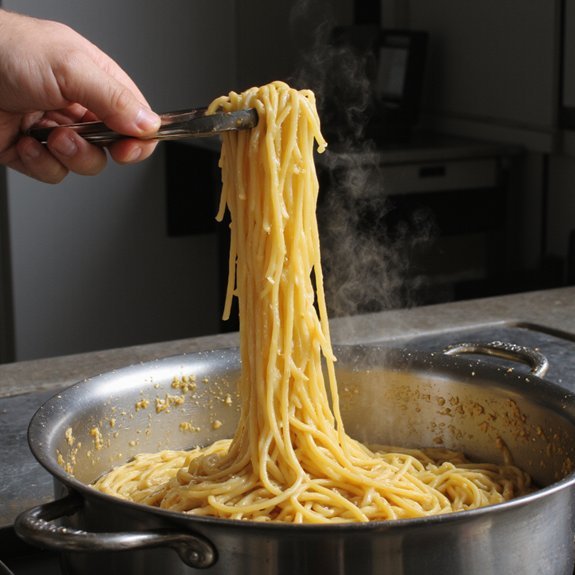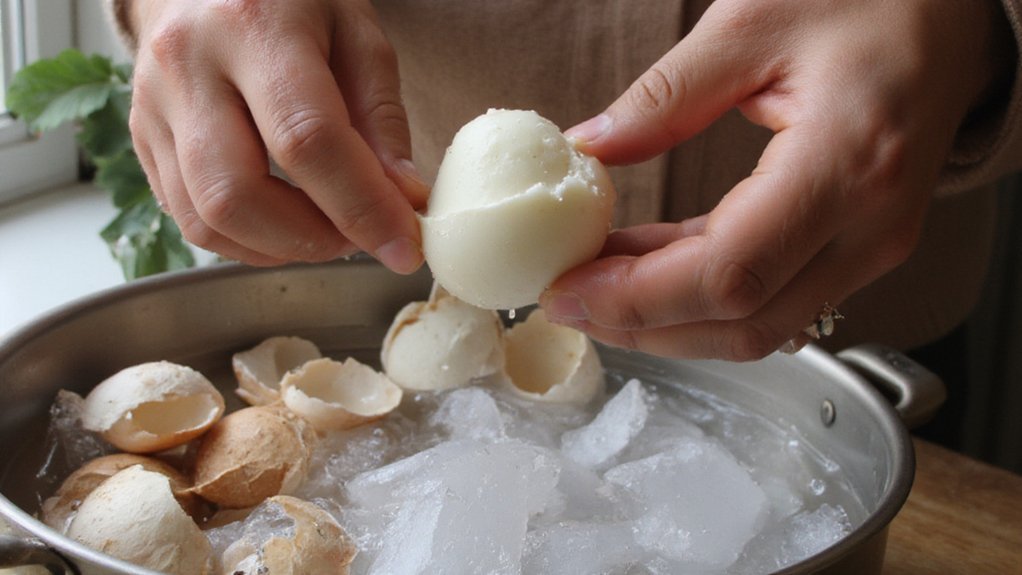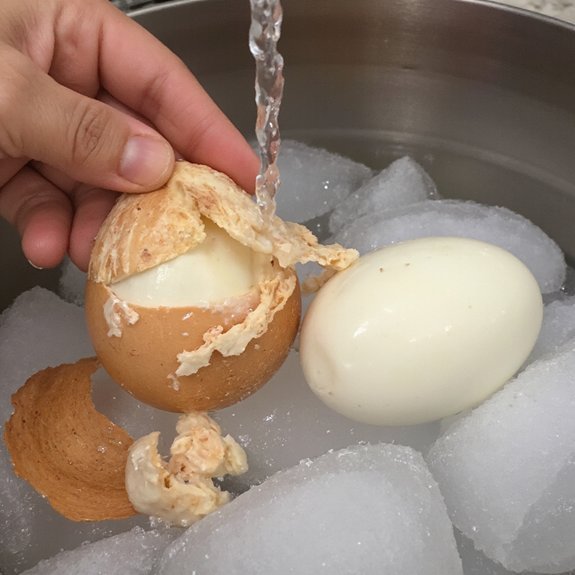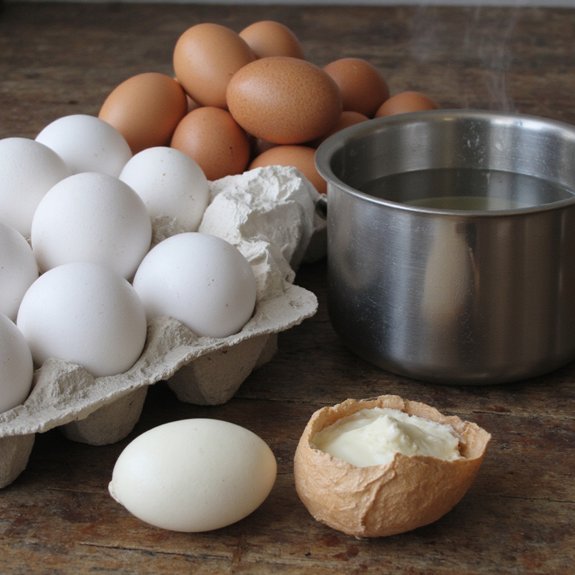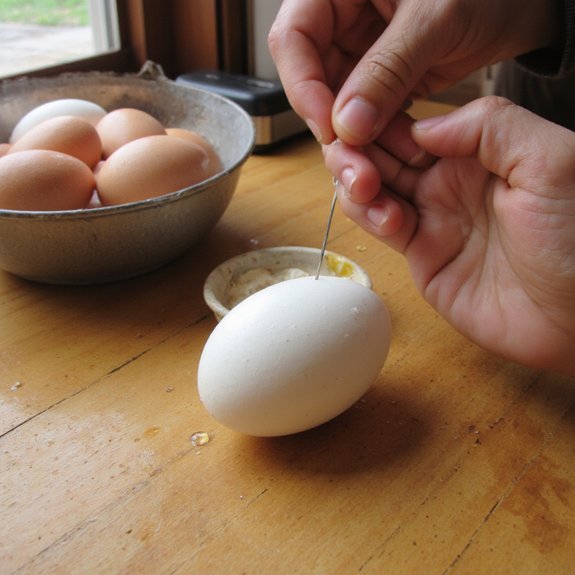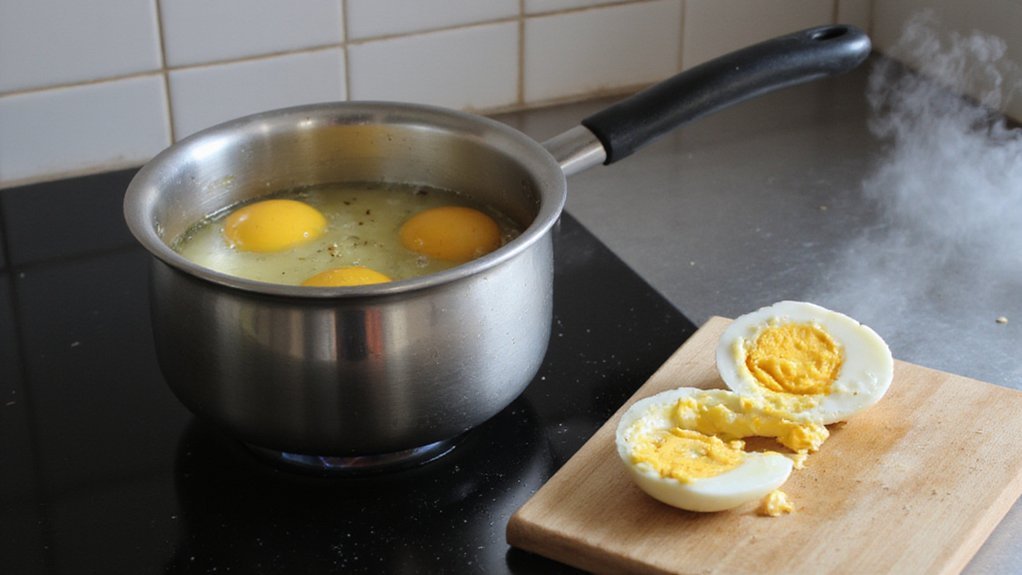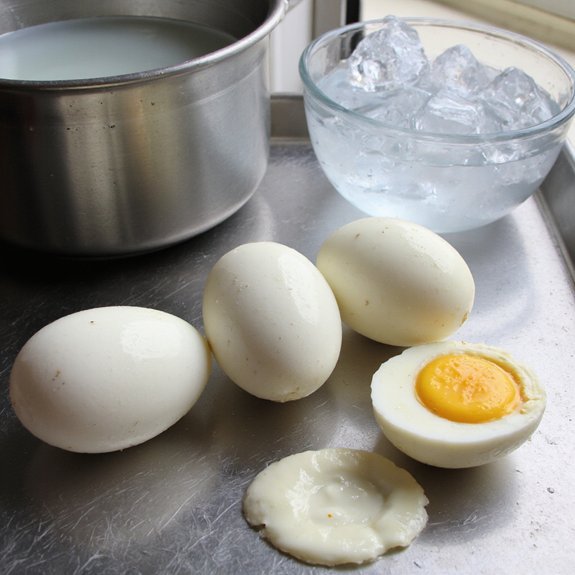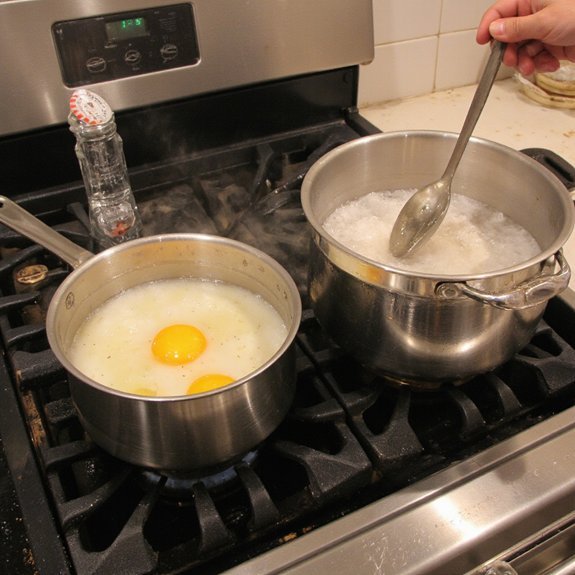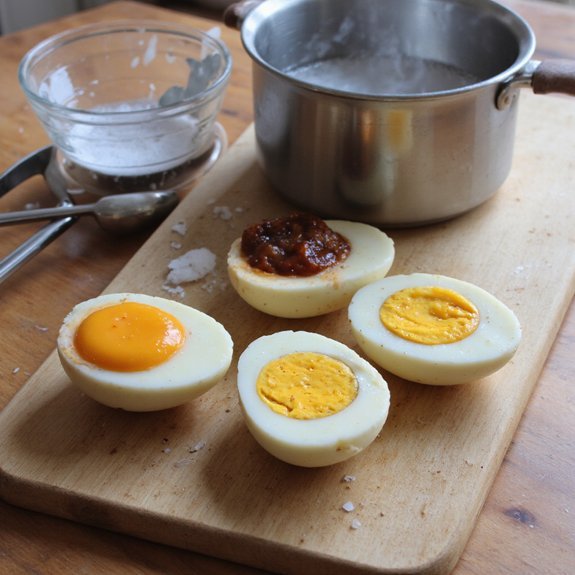You should rely on internal temperature more than color, because 165°F (75°C) is the safety threshold. Use a calibrated thermometer and probe the thickest part; allow for carryover heat. Visual and tactile cues can supplement but aren’t foolproof. Keep going — I’ll show the correct thermometer technique and simple tips to guarantee safe, juicy chicken.
Key Takeaways
- Measure internal temperature: chicken is safe at 165°F (74°C) in the thickest part, away from bone.
- Use a calibrated instant-read or leave-in probe, inserting centrally and waiting for a stable reading.
- Rest the chicken (10–15 minutes for breasts; longer for large roasts) to allow carryover cooking and juice redistribution.
- Visual checks: flesh should be opaque and uniformly pale, with clear juices—not pink or cloudy.
- Tactile check: cooked chicken feels firm and springy, not soft or squishy; compare to the fleshy palm area.
Why Internal Temperature Matters for Safety and Quality
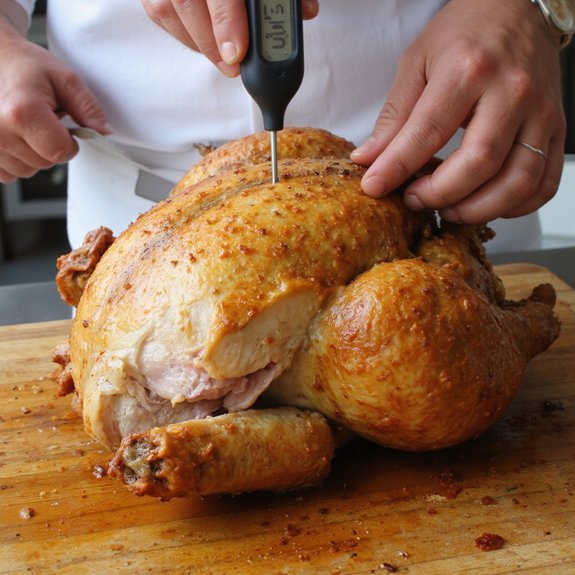
Safety depends on internal temperature: you can’t rely on color or juices to tell if chicken is safe, so you need to measure its internal temp. You should aim for a core temperature that eliminates pathogens without overcooking, because both food safety and cooking quality hinge on that balance. Thermal targets are evidence-based; meeting them reduces risk of Salmonella and Campylobacter while preserving moisture and texture. You’ll calibrate cooking times to the anatomy and thickness of pieces, and you’ll adjust heat, resting periods, and cooking method to reach temperature uniformly. Innovation in technique—brining, sous-vide, targeted searing—lets you hit safety thresholds with superior tenderness and flavor. Measuring outcomes, not assumptions, gives reproducible results in professional and home kitchens. By prioritizing temperature as the control parameter, you create a predictable process that optimizes safety, maximizes quality, and supports iterative improvements in your cooking workflow. You can iterate based on metrics.
How to Use a Meat Thermometer Correctly
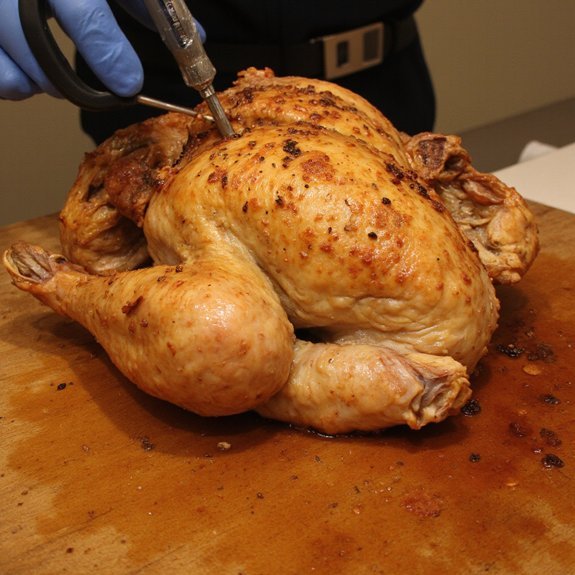
When you want reliable results, use a calibrated meat thermometer and insert its probe into the thickest part of the chicken—avoiding bone and contact with pan or gristle—until the reading stabilizes; instant-read thermometers give fast checks, while leave-in probes monitor during cooking.
- Instant-read — quick checks for small cuts.
- Leave-in probe — continuous for roasts.
- Wireless — remote alerts.
Choose meat thermometer types by task and probe. Verify thermometer calibration regularly with ice- and boiling-point tests. Insert the probe into the thickest muscle, avoiding bone, fat, pan, and gristle; keep centered. Wait for the reading to stabilize before recording temperature. Rest chicken after reaching target internal temperature to let residual heat equalize. You’ll reduce risk and improve texture by relying on measured internal temperature rather than time or appearance. Adopt these practices and you’ll get consistent, safe, and innovative cooking outcomes every time; repeat routinely.
Visual Signs: Color and Juices to Watch For
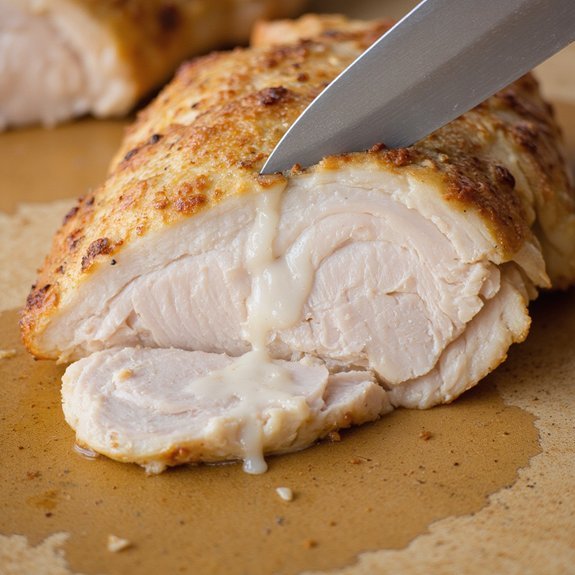
Look at color and juices as quick clues, but don’t rely on them alone: cooked poultry flesh typically turns opaque and pale (white to tan) and the juices run clear, which usually indicates the muscle proteins have denatured. You should observe color changes across the bird — wing, breast, and thigh don’t cook identically — and expect uniform opacity rather than isolated pale spots. Juice clarity matters: cloudy, pink, or reddish liquids suggest residual myoglobin or undercooking; clear juices usually indicate sufficient heat exposure. Use visual signs as corroboration, not proof; studies show appearance can vary with pH, marinades, and age of the bird. If you’re innovating with brines or smoke, document how those techniques affect color and juice clarity for repeatable results. Rely on visual cues to guide further verification steps, integrate them into your workflow, and calibrate your process around reproducible outcomes for consistent safe results.
Texture and Touch Tests for Doneness
How firm should chicken feel to tell if it’s done? You’ll judge doneness by feel: cooked chicken is springy, slightly firm, and resists pressure without being rock-hard. Use touch indicators—compare to fleshy parts of your hand for consistent reference. Remember texture variations between breast and thigh; darker meat stays more yielding when safe to eat.
Use these simple tactile checks:
- Press center of a breast: it should feel firm and bounce back slightly.
- Press near the bone on a thigh: it should be tender but offer resistance.
- Slice thinly across the thickest part: juice clarity and fibrous separation confirm doneness.
These tests complement a thermometer and help when innovation demands speed and adaptiveness. Train your fingers with repeated, measured trials and note how texture variations correlate with internal temperatures. Trust validated touch indicators, but verify with a probe when precision matters. Every single time reliably.
Cooking Times by Cut and Method
Use the touch checks you practiced alongside timing benchmarks, because cook times depend on cut, thickness, and method and only give a reliable estimate when paired with feel or a probe. For bone-in thighs and drumsticks, expect 35–45 minutes at 375°F in the oven or 25–30 minutes indirect on a medium grill; boneless breasts need 20–30 minutes at 375°F or 6–8 minutes per side on a hot skillet. Wings crisp in 25–30 minutes at 400°F; whole birds roast 13–15 minutes per pound at 350°F. Brining or sous-vide changes timing: sous-vide breasts at 140°F for 1–2 hours, thighs at 165°F for 2–4 hours, then finish with high heat for color. Use lower-and-slower for collagen-rich cuts, higher heat for thin pieces. Track internal temperature targets and adjust by thickness and chicken parts. When you combine method-aware timing with touch or a probe, you’ll make precise, repeatable results across cooking methods.
Carryover Cooking and Resting Tips
When you remove chicken from heat, carryover cooking will raise its internal temperature by several degrees as residual heat redistributes, so you should pull it from the heat a few degrees below your target. For most boneless pieces you’ll see about a 5–10°F rise, while bone-in cuts and whole birds commonly climb 10–15°F. Let the chicken rest loosely tented—about 5–10 minutes for breasts and other small cuts, and 10–20 minutes for larger or bone-in pieces—to allow juices to redistribute and temperatures to stabilize.
Carryover Cooking Basics
Because chicken retains heat, its internal temperature will continue to rise after you remove it from the heat—typically about 5–10°F (3–6°C) for individual breasts or pieces and up to 10–20°F (6–11°C) for whole birds or large roasts. You should plan for these carryover effects when deciding target pull temperature; heat retention varies with mass, bone presence and cooking method. Use an instant-read probe to measure near the thickest point and anticipate the final temperature. Practical adjustments reduce overcooking and improve texture.
- Remove at a target slightly below final safe temp to account for rise.
- Monitor mass and geometry; larger pieces show greater carryover.
- Use insulation (tenting) strategically to control heat loss.
Trust data-driven practice to refine your targets and hit doneness.
Resting Time Guidelines
Plan resting time by size and geometry: small pieces and breasts generally benefit from 5–10 minutes of rest, while whole birds and large roasts commonly need 15–30 minutes to complete carryover heating and let juices redistribute. You’ll use resting benefits to improve texture and reduce juices lost when carving; brief rests stabilize temperature gradients so carryover reaches safe, even levels without overcooking. Follow timing recommendations: tent loosely with foil, measure internal temp before and after a short rest, and adjust future rests based on geometry, initial temperature, and cooking method. For innovation, test variable rests (e.g., cool-air rest versus foil tent) and record objective temp and yield data; this evidence-driven approach refines your protocol and reduces variability. You’ll calibrate timing as you iterate regularly.
Troubleshooting Common Doneness Problems
How do you diagnose why chicken’s overcooked, dry, or still pink despite long cooking? Start by checking objective doneness indicators — internal temperature, clear juices, and texture — then follow troubleshooting tips: probe placement errors, low oven calibration, or insufficient resting. Use this quick checklist to isolate causes and apply fixes.
- Check thermometer: insert into thickest part, avoid bone; 165°F (74°C) is target for safety, but 160–163°F followed by rest yields juicier meat.
- Evaluate technique: high heat or prolonged exposure dries meat; try temperature sequencing (sear then finish at lower temp) or sous-vide for control.
- Correct equipment: verify oven and probe calibration; use convection or consistent pan contact to guarantee even cooking.
You’ll reduce guesswork by relying on measured doneness indicators and systematic troubleshooting tips, then iterate with controlled tests to innovate your process. Document results and adjust timings for repeatable, scalable culinary process improvements.
